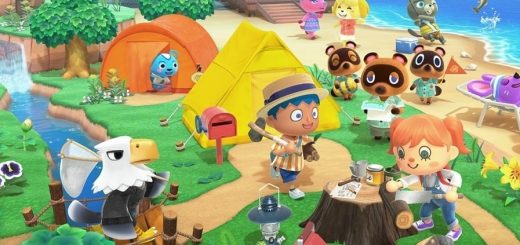Luigi's Mansion has always offered Mario's world in domestic close-up
Ghosts are a close-up. Eventually they are, anyway. After they’ve been a sudden movement at the back of the frame, a shimmer or glitch that may or may not have happened, you cut in close and you hold the image tight and you take it all in. Anybody there?
At these moments, ghosts are the rocking chair that may have just moved, the painting or moose head whose eyes have flickered to track you as you pass. Ghosts are details, which means that games have often struggled with them. Action games particularly have often lived in the wide shot, the camera way back, the broad approach to scene-setting applied. Up until the last few decades, most props were stuck to the tables in games, most doors were all-but painted onto their walls.
As it happens, doors are a pretty good place to start when approaching the Luigi’s Mansion games, a series that’s fairly bursting open with ghosts. With Luigi’s Mansion 2 coming to the Switch this week, I’ve been looking back at the series as a whole, and these games work eager magic with doors. I can still remember firing the first game up on the GameCube and that moment where Luigi, who’d just won a haunted mansion in a competition he didn’t enter, first reached for its brass door handle. A reference to Resident Evil? Maybe. But also a statement of intent: close-ups, details, the glinting play of light on metalwork. Here was a game in which the little domestic things would matter.
For the last week or so as I’ve been replaying the games, I’m struck by how tightly they cleaved to this idea, despite a shift in developer, a shift between platforms, and a shift in scale and scope: one house, a bunch of houses, a weirdo hotel. Luigi’s Mansion has an enviable consistency throughout, I think, particularly for games that come out so infrequently. Unlike Luigi, anyway, you know what you’re getting into. This is the series that always dims the lights, that always invites you inside. It’s the series that revels in doors and what doors conceal. It’s the Mario game that’s in love with human clutter.
Yesterday I tried to make a list of some of the games’ clutter, a sort of Luigi inventory to bring the design’s spirit most clearly into view. “Rolling pins, lawnmowers, yarn,” the list reads in one section. But it misses the point a little. The rolling pin shifts back and forth and eventually clatters off the kitchen table. The lawnmower rattles and huffs as it chews a path across a raggedy midnight lawn. The yarn is caught and yanked and then spins and spins until it’s all flown off its reel. It’s not enough to say that Luigi’s Mansion games are about domestic objects. They’re about domestic objects animated, brought to life, spinning around you and knocking at the walls and ceilings.


